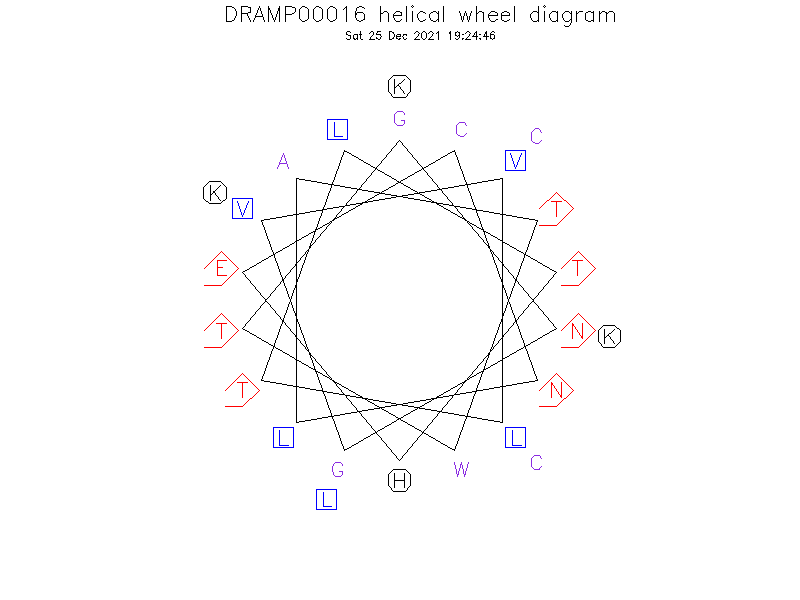General Information
-
DRAMP ID
- DRAMP00016
-
Peptide Name
- Salivaricin 9 (Sal9; Bacteriocin)
-
Source
- Streptococcus salivarius (Gram-positive bacteria)
-
Family
- Belongs to the lantibiotic family (Class I bacteriocin)
-
Gene
- sivA
-
Sequence
- GNGVVLTLTHECNLATWTKKLKCC
-
Sequence Length
- 24
-
UniProt Entry
- No entry found
-
Protein Existence
- Protein level
Activity Information
-
Biological Activity
- Antimicrobial, Antibacterial, Anti-Gram+
-
Target Organism
-
- Gram-positive bacteria: Streptococcus pyogenes and some Enterococci.
-
Hemolytic Activity
-
- No hemolysis information or data found in the reference(s) presented in this entry
-
Cytotoxicity
-
- Not included yet
-
Binding Target
- Not found
Structure Information
-
Linear/Cyclic
- Not included yet
-
N-terminal Modification
- Not included yet
-
C-terminal Modification
- Not included yet
-
Nonterminal Modifications and Unusual Amino Acids
- Not included yet
-
Stereochemistry
- Not included yet
-
Structure
- Not found
-
Structure Description
- Not found
-
Helical Wheel Diagram
-
PDB ID
- None
-
Predicted Structure
- There is no predicted structure for DRAMP00016.
Physicochemical Information
-
Formula
- C114H190N32O33S3
Absent Amino Acids
- DFIMPQRSY
Common Amino Acids
- LT
Mass
- 2633.14
PI
- 8.66
Basic Residues
- 4
Acidic Residues
- 1
Hydrophobic Residues
- 8
Net Charge
- +3
-
Boman Index
- -14.06
Hydrophobicity
- 0.125
Aliphatic Index
- 93.33
Half Life
-
- Mammalian:30 hour
- Yeast:>20 hour
- E.coli:>10 hour
Extinction Coefficient Cystines
- 5625
Absorbance 280nm
- 244.57
Polar Residues
- 11
DRAMP00016

Comments Information
Note
- The Sal9 genetic determinants appear generally (but not always) to be megaplasmid-associated, and production seems often to occur in strains that also produce SalA. As is the case for SalA, the production of Sal9 appears to be autoinducible.
Literature Information
- ·Literature 1
-
Title
- Salivaricin 9, a new lantibiotic produced by Streptococcus salivarius.
-
Pubmed ID
- 21310787
-
Reference
- Microbiology. 2011 May;157(Pt 5):1290-1299.
-
Author
- Wescombe PA, Upton M, Renault P, Wirawan RE, Power D, Burton JP, Chilcott CN, Tagg JR.

